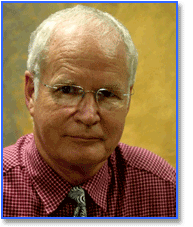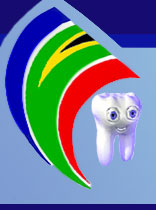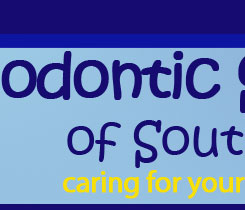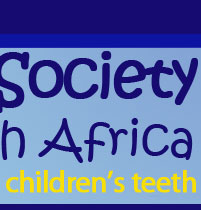Articles

Conscious Sedation in Dentistry![[Print]](images/images/Printer.gif)

-Prof. James Roelofse
The provision of adequate pain and anxiety control is an integral part of the practice of dentistry. The General Dental Council in England , and I believe all Dental Councils, have indicated that this is both a right for the patient, and a duty placed on the dentist. All patients deserve appropriate pain and anxiety control for any dental procedure – a range of pharmacological and non-pharmacological options are available.
The area of conscious sedation for dentistry has attracted a lot of attention worldwide. Since 1998 there has been a sea change in the provision of conscious sedation in the United Kingdom . This has resulted in an increased emphasis on the safe and effective provision of conscious sedation.
All international professional societies, including SADA, accept that conscious sedation can be delivered in a dental practice, in a community dental service clinic, or in a hospital setting. The American Society of Anesthesiologists published Practice Guidelines for Sedation and Analgesia by Non-Anesthesiologists. These Guidelines, and I quote, are designed, “to be applicable to procedures performed in a variety of settings ( i.e. hospitals, clinics, physician, dental, and other offices) by practitioners who are not specialists in anesthesiology” SADA Guidelines on Conscious Sedation in Dentistry state clearly that, “conscious sedation is appropriate for patients receiving treatment in the dental practitioner's rooms”. This is consistent with all international guidelines on conscious sedation.
Professional dental societies worldwide can feel proud about their contribution towards the safety of conscious sedation. Numerous guidelines are available to support this. The purpose of these guidelines is to allow practitioners to provide their patients with the benefits of conscious sedation while minimizing the associated risks.
In 2001 Dental Societies worldwide, with guidelines on conscious sedation in dentistry, received a huge complement from the UK Academy of Medical Royal Colleges and their Faculties – this was a report of a working party established by the Royal College of Anaesthetists on Safe Sedation Practice – “given that the majority of users, other than dentistry, never attend formal courses of instruction, this is not surprising” – pointing to the evidence that guidelines are not always followed. The UK Academy of Medical Royal Colleges come to a very interesting conclusion – I will say more about this later – “the key point is that safety will be optimized only if practitioners – and this was addressed to all practitioners, specialists and non-specialists - use defined methods of sedation for which they have received formal training”
This brings me to the issue of sedation providers. Who can administer conscious sedation for dentistry – we need to look at the national and international picture. I have been asked to give a lecture at the World Congress of Anaesthesiologists in 2008 on, “Who should administer conscious sedation” If we look at the world picture, then we see that the majority of conscious sedation cases for dentistry are being done by non - anaesthesiologists, who have been trained to administer conscious sedation for dental cases – with a remarkable safety record. This is a tribute to the Dental Societies who have guidelines in place, and insist that those practitioners who do conscious sedation in dentistry – as in the SADA Guidelines, must “undertake formal and ongoing education and training” – more about this later. In 2005 an questionnaire was sent out to 116 University hospitals in the USA and Canada to find out who are involved in providing sedation services - results show that 59% of the sedation cases were done by a physician/nurse combination – anaesthesiologists were involved in 26% of the cases.
There are no international guidelines on conscious sedation in dentistry that say non - anaesthesiologists cannot do conscious sedation in dentistry. In fact, numerous societies have taken responsibility and assiduously promulgated guidelines for sedation by non - anaesthesiologists. Furthermore, the existence of these guidelines is, at least in part, tacit approval for non - anaesthesiologists to provide conscious sedation. The International Federation of Dental Anesthesiology Societies is a leading player in the world in making conscious sedation in dentistry safe. They are also involved in giving direction in teaching pain and anxiety control. This organization has 16 member states of which South Africa is a member. The author is a member of the board.
In the UK the DSTG (Dental Sedation Teachers Group), of which the author is a member, plays an important role in leading the direction as far as training in conscious sedation is concerned.
I peer-reviewed the National Dental Guidelines on Conscious Sedation in Dentistry in 2006 of the Scottish Dental Clinical Effectiveness Program. The guidance was produced by a group of professionals with a particular interest and experience in dental sedation. The guidance is an evolution of the report by a subgroup of the Standard Dental Advisory Committee in the UK, and extends the advice for dentistry by the Scottish Intercollegiate Guideline Network – nowhere in this guidance is there any reference that non - anaesthesiologists cannot administer conscious sedation in dentistry – the guidance is however clear that any practitioner, and this includes everybody, doing conscious sedation for dentistry must be trained!
We need not debate the issue of safety of conscious sedation for dentistry in the surgery here – there are numerous publications on this issue. The fact that it is now supported at international level also shows that conscious sedation has become a safe treatment modality.
The author, and a maxillofacial and oral surgeon, will shortly publish on a comparison of the safety and efficacy of conscious sedation and general anaesthesia in 600 patients - conscious sedation was done in the dental surgery. It is enough to say at this stage that all cases undergoing conscious sedation in the dental surgery were safely done – there were no adverse events, nor any escalation in care. The incidence of side effects was minimal with conscious sedation – patient satisfaction was significantly better with conscious sedation.
This brings us to the issue of training. I believe that qualifications and training should be the foundation of safe practice, whilst the selection of patients and the environment are dependent upon the experience of the sedationist. Continuing professional development is vital in creating a link with guidance and guidelines.
SADA should be complimented on the issue of training for conscious sedation in dentistry in South Africa . Their Guidelines drafted in 2001, and updated in 2007, state clearly what is expected, “education and training in the theory, methods and techniques of conscious sedation can be provided in academic institutions where conscious sedation is practiced and taught -------- even for skilled sedationists and their assistants, refresher courses should be attended at least annually”
With this in mind the University of Stellenbosch , and now the University of the Western Cape started an University-accredited Postgraduate Diploma in Conscious sedation for practitioners. This course provides exactly what the SADA guidelines say, “education and training in theory, methods and techniques of conscious sedation” All the practitioners must pass an ACLS/APLS course as part of the diploma, indicating that they know how to resuscitate if this becomes necessary. This diploma has attracted international students from the rest of Africa, the UK and Canada .
We also present a Masters program in Conscious sedation – this gives students a wonderful opportunity to do research in this field. In the past 4 years five students received their reward with research on a variety of safety and efficacy issues. Many publications will follow in the years to come.
The author is also the program director of the Postgraduate Diploma in Conscious Sedation and Pain Management presented by University College London, London . More than 100 practitioners from all parts of the world have done this certificate over the past 3 years. This course is available for medical and dental practitioners and include theoretical and practical training.
In 2006 we extended our training program into East Africa for anaesthesiologists and non-anaesthesiologists.
The author has been nominated as chairman of a committee that must develop conscious sedation in East Africa . This is a tripartite arrangement between the World Health Organization/UNICEF and an East African University . This will also involve training non - anaesthesiologists to do conscious sedation in rural areas.
The above shows clearly that non – anesthesiologists have become an important group of service providers in conscious sedation for dentistry – in fact they have become policy makers.
On a last note – we have been involved in conscious sedation for dentistry at the Faculty of Dentistry, currently the University of the Western Cape , for the past 15 years. Our sedation providers are mostly non - anaesthesiologists who did our diploma program. We have had no mortalities, no escalation in care, no serious adverse events, doing both children and adults.
We are tremendously proud about this achievement because we have been able to provide a sedation service for those who cannot afford private healthcare.
Let me conclude – we don't need more guidelines, we need practitioners that follow existing guidelines. Thus the real requirement is for improvement in both the awareness and implementation of information that is already widely available.
As academic people with no vested interests, but the safety of our patients, we need a partnership with SADA, as is the case in all international societies on conscious sedation for dentistry.
Let us not forget – conscious sedation does not belong to a diverse group of people that include paediatricians, anaesthesiologists, emergency medicine physicians, radiologists, endoscopists, dentists, nurses and hospital administrators.
Conscious sedation belongs to our patients. We will never compromise their safety!
James Roelofse
Professor and Head of Anaesthesiology and Sedation
University of the Western Cape
Visiting Professor in Anaesthesiology
University College London,
London , UK

The Status of Amalgams in Pediatric Dentistry: Pros and Cons ![[Print]](images/images/Printer.gif)
by Anna B. Fuks, C.D. (Professor, Department of Pediatric Dentistry, Hebrew University
Hadassah School of Dental Medicine, Jerusalem, Israel)
|

E-mail:
|
|
Anna B. Fuks was born in Curitiba, Brazil, and graduated in Dentistry by the Federal University of the State of Parana. She completed her post-graduate course in Pediatric Dentistry at the University of Alabam and did her residency at the Children’s Hospital of the same university. She then returned to Brazil, where she practiced and taught Pediatric Dentistry at the University of Parana until 1973. In the same year she immigrated to Israel and joined the Department of Pediatric Dentistry of the Hebrew University of Jerusalem, Israel, reaching the degree of professor. Concomitant to teaching and clinical private practice, she dedicated herself to clinical and laboratory research. Being fluent in several languages, she lectured in pediatric dentistry worldwide and became an honorary member of several academies of pediatric dentistry. Dr. Fuks is a member of the editorial board of several dental journals, has received several prizes in research, has written 8 chapters in pediatric dentistry books and has published over 100 articles in many international journals. Presently, she continues teaching at the Department of Pediatric Dentistry of the Hadassah School of Dental Medicine and has a part-time private practice.
|
Silver amalgam has been used for restoring teeth for over 150 years and is still used extensively in general practice and in pediatric dentistry. However, the improvement in the physical properties and clinical handling of the tooth color materials, together with the continuing concern over the toxicity of dental amalgam, led to the questioning of the desirability of continuing to use dental amalgam in children. The subject has been so widely investigated1-6 that the British Society of Paediatric Dentistry produced a document to provide guidance on the use of amalgam in children’s dentistry in the United Kingdom.7
The present report attempts to summarize the several factors that affect the effectiveness, the advantages and disadvantages of the use of dental amalgam in primary teeth.
Factors related to the Material
Toxicity of Amalgam
The potential toxicity of mercury, inhaled or ingested, is the main concern regarding the use of dental amalgam. The use of silver/tin alloy capsules and mercury has considerably reduced the risk of inhalation during mixing. However, despite encapsulation, concerns still persist and relate mainly to the effects of inhalation of mercury vapor or amalgam dust, the ingestion of amalgam, allergy to mercury and environmental considerations.
Inhalation of Mercury Vapor by Dental Personnel
Eley described a few instances of mercury intoxication in dental staff owing to poor mercury hygiene.1 A fall in the excreted mercury in the urine of dental personnel has been demonstrated after correct handling of mercury and amalgam.
Ingestion of Amalgam by Patients
Inhalation and ingestion of mercury from dental amalgam can occur during placement, polishing or removal of restorations, or chewing. The daily dose of mercury from dental fillings produced by chewing (1 - 2µg/adult) is much lower than the threshold for hazard to health from air/mercury exposure.1
A considerable number of studies investigated the fate of inhaled or ingested mercury in the body. The usual routes for excretion (after placement of restorations) are feces or urine. Plasma and urine mercury levels following placement or removal of restorations can be considerably reduced when the rubber dam is used.8,9 Some dental procedures, such as bleaching, can increase the release of mercury from amalgam. It has been shown that 10% carbamide bleaching agents increased the mercury release from amalgam in vitro.10
Mercury can also pass from mother to fetus, and may be detected in the milk. However, animal and human studies have not demonstrated any association between amalgam fillings and birth defects.1
Allergy to Mercury
True allergies to amalgam are rare; about 50 cases have been reported in the past 100 years, although it is uncertain what proportion of these were children.1 There have been some reports of an association between some oral lichenoid lesions and the presence of amalgam fillings adjacent to the affected area of the oral mucosa. It should be kept in mind that other restorative materials can also cause lichenoid lesions.11,12
Environmental Issues
Many countries have planned to reduce the industrial use of mercury and its use in dental amalgam for environmental reasons. The use of mercury in dentistry accounts for about 3% of the total amount used on a worldwide basis. Several European countries have encouraged good mercury hygiene in dental practices, including proper handling of waste amalgam to prevent it from reaching the environment.1,13
Major reviews on the risk of dental amalgam in both the United States2,3 and the United Kingdom1 concluded that “over the years amalgam has been used for dental restorations without evidence of major health problems.” Recently, Dodes reported many errors in the antiamalgam literature and concluded that the evidence supporting the safety of amalgam restoration is compelling.5
Composition and Properties of Amalgam
Dental amalgam consists of an alloy of silver, copper, tin and zinc combined with mercury. Unreacted alloy particles are called the gamma phase and are mainly silver-tin. These particles combine with mercury, forming a matrix consisting of gamma 1 and gamma 2 phases. The gamma 1 phase involves the binding of silver and mercury (Ag2Hg3) and the gamma 2 phase the binding of tin and mercury (Sn7Hg). The gamma 2 phase is responsible for early fracture and failure of amalgam restorations.
Copper was introduced to avoid the gamma 2 phase, replacing the tin-mercury phase with a copper-tin phase (Cu5Sn5). The copper-tin matrix decreases the corrosion of tin, preventing secondary weakening with subsequent fracture of the restoration.14
Marginal Integrity
Amalgam is the only restorative material existing nowadays in which the marginal seal improves with time. This is mainly due to the acid environment and low oxygen concentration in the space between the tooth and the restoration, leading to corrosion. In the low copper amalgam, the gamma 2 phase that was formed slowly filled the mentioned space, creating the marginal seal.
In the high copper amalgams, there is no formation of gamma 2; therefore, it takes double the time (up to 2 years) of the low copper amalgam to produce a similar marginal seal.15-17
Cavity Design
Although amalgam is still widely used as a restorative material worldwide, its lack of bonding capability makes it generally unsuitable for the restoration of minimal carious lesions. The achievement of adequate resistance and retention for such restorations requires the removal of a considerable amount of healthy tooth structure. Thus, for minimal Class I preparations, a preventive resin restoration may be preferable.18
The most common cavity design problem leading to immediate failure concerns retention.19 In Class II preparations, particularly when the proximal outline flares out buccally and lingually, it could stress the material at these margins. Isthmus width is also important. If the proximal box is large and the isthmus is narrow, a fracture could eventually occur. Conversely, if the isthmus is too large, a great deal of tooth material is wasted, the cusps are weakened and the pulp horns are endangered. Another common mistake is the presence of occlusal flash. These thin amalgam spurs, if subjected to stress, will fracture, leaving a ledge of rough amalgam at the margin, offering a protective area for plaque accumulation and debris.19 In primary teeth, many practitioners limit Class II amalgam restorations to relatively small two-surface restorations. Three-surface restorations (MOD) may be done, but studies have shown that stainless-steel crowns are more durable and predictable.20,21 This issue is discussed further under Clinical Implications and Recommendations.
Technique Sensitivity
Amalgam tends to be much less technique sensitive and more operator friendly when compared with other restorative materials, particularly the new composites. Minimal deviations from the manufacturer’s recommendations may compromise the final result of the composite restoration, whereas amalgams are less affected.15 However, moisture contamination should also be controlled in amalgams because excess moisture causes delayed expansion, particularly in zinc-containing alloys. The use of a rubber dam can prevent moisture contamination and isolate the working field effectively.14
Factors Related to the Patient
Caries Risk Assessment
Caries risk assessment has been considered important for the individual patient because most risk factors, when analyzed individually, have low predictive value. It could be anticipated that a patient who has low fluoride availability, high dietary sucrose intake and poor compliance with dietary and oral hygiene advice and who has reduced salivary flow, is an irregular dental attender, has a high mutans streptococci (MS) count and already has active caries would be at high risk of further caries. Reducing the number of risk factors may reduce the risk, but the influence of each factor may vary with each patient.18
Thibodeau and O’ Sullivan measured annually the salivary mutans streptococci (SMS) counts to identify the long term risk in both primary and mixed dentition.22 They concluded that despite some limitations of determining caries risk using microbiologic methods, the use of SMS testing in children as young as 3 years old may provide valuable information for identifying and aggressively treating those children at greatest risk of developing dental caries in the primary and permanent teeth.
An expert system for caries assessment has been suggested by Tinanoff and Douglas.23 This system considers caries risk indicators suggested at the American Academy of Pediatric Dentistry Restorative Dentistry Consensus Conference3:
- Present caries activity
- Past caries experience
- Demineralized areas
- Mother's caries activity
- Sibling's caries activity
- Socioeconomic status
- MS levels
- Water fluoridation
- Sugar consumption (including bottle and sippy cup)
- Dental home
- Other high-risk factors (appliances in the mouth, children with special needs)
When the above list is considered, the relevant evaluations, with the possible exception of the quantitative assessment of MS, may be readily available to the dentist in the dental office. Based on these points, it should be possible to identify the at-risk patient with reasonable accuracy and, consequently, to make a decision on the need to restore a lesion. The decision not to restore a lesion should be associated with the beginning of preventive therapy, ultimately followed by the assessment of whether a particular lesion is active at the time of the assessment.
Salivary Flow
Although less common in children, certain patients present with unusual amounts of plaque owing to a diminished salivary flow, induced by taking certain drugs. The solution might actually be in restoring the salivary flow by having the patient chew sugarless gum to generate stimulated saliva.
Stimulated saliva offers more buffering protection than nonstimulated saliva, with mastication being the main stimulant. That is why chewing sugarless gum can often help prevent caries.24
Presence of Orthodontic Appliances
The main source of salivary bacteria is the oral soft tissues, which continually shed oral mucosal cells. Therefore, from a bacterial point of view, the solid and nonshedding surfaces of the teeth are very attractive. However, oral bacteria do not grow on all tooth surfaces with equal preference or intensity. Thus, the presence of orthodontic appliances, or, more specifically, bands and brackets, may favor the accumulation of bacteria with cariogenic potential.25 If no measures are taken to disturb or remove the cariogenic plaque, the condition becomes a self-perpetuating process that slowly may result in a visible destruction.25
Patient Age and Type of Tooth
The age of the patient at the time of restoration placement has been reported to be a determinant in restoration longevity in primary molars.26-29
Studies evaluating the durability and life span of stainless steel crowns and Class II amalgams revealed that in children 4 years of age and younger, crowns had a success rate of approximately twice of that of amalgams.26 It was also reported that restorations placed in first primary molars exhibit a shorter survival time than those placed in second primary molars.28
Factors Related to the Operator
Operator Skills
Lavelle studied 6,000 defective restorations in adults and concluded that operator skill was the greatest factor in determining the durability of the restorations and recurrent caries was the main reason for their failure.30 These views were shared by Dahl and Eriksen.31
In the primary dentition, Qvist et al. found that the major reason for replacement of restorations was their fracture or total loss, again factors related to operator error.32 This point can be reinforced by the low failure rate reported from a specialist practice,33 suggesting that familiarity with behavior management and restorative techniques increase the success rate in young children.
Correct Diagnosis and Treatment of Caries
Restorative dentistry seems to have been based on the belief that dental caries could be treated effectively by restoring and, therefore, that such dental treatment would automatically result in oral health. Elderton claimed that many dentists are quick to replace restorations that they judge to be imperfect in some way; at each replacement the tooth becomes weaker and the restoration more complex and costly – the “repeat restoration cycle."34
The cure for caries, according to Elderton, lies in changing lifestyles and treatment with topical agents34; restorations per se do not offer these and hence do not provide the cure that they are often believed to effect.
Longevity of Restorations
This issue has been the focus of attention during the past decades, and several cross-sectional studies have been carried out assessing the age of the fillings and the reasons for their replacement.30-32,35-38 Ozer and Thylstrup analyzed 18 of these studies and concluded that about half of all replacements occur because of the diagnosis of secondary caries.39 Qvist et al. studied the accumulated percentage distribution of replaced amalgam restorations in adults and reported that 50% of them were replaced after 8 years.40
The durability of amalgam restorations in primary molars has been assessed in amalgam studies proper3,26,28,41 or as controls for resin-modified glass ionomer,42,43 compomers44-46 and composites.47-49
In one of the early studies of Class II amalgam in primary molars, McRae and coworkers concluded that failure of the amalgam itself was responsible for more marginal defects than enamel breakdown.41 Most failures were observed in first primary molars,28,41 and the buccal margins on the occlusal were the most susceptible to this failure. Qvist and coworkers found that the major reasons for replacement of restorations in primary molars were their fracture or total loss, factors related to operator error.32
Most reports on the longevity of restorations have been based on treatment by more than one operator,26,28,30,32,50,51 with relatively few by a single operator.27,33,52,53 In the first case, factors such as operator skills, patient management techniques and materials used introduce several variables that are difficult to control. To overcome these difficulties, Randall and coworkers evaluated the efficacy of stainless steel crowns versus amalgam restorations in primary molars by means of a literature review and meta-analysis.21 Ten of 35 articles fulfilled the criteria and were analyzed qualitatively.52-57 The highest success rate for both restorations and crowns was reported in the study with the largest sample size and longer follow-up time.33 The low failure rate of 11.6% for amalgam and 1.9% for crowns was attributed to limiting the use of amalgam to small lesions and for the experience in managing children in a specialist practice setting.33 Conversely, Eriksson et al. reported a failure rate of 76% using amalgam mainly to restore small lesions, leading to the conclusion that operator error again appears to be the main source of failure.54
Levering and Messer assessed the durability of amalgams in primary molars using the records of pediatric patients attending a dental school clinic.26 The authors reported that their selection was biased because only the records of children with amalgam in at least 4 primary molars were included. Possibly, these children had extensive restorative histories and were at increased risk of caries and restoration replacement. These amalgams may not be representative of those in children with lower caries indices and cannot be extrapolated for children with less than 4 restored molars. True failures occurred more frequently among Class II amalgam than among Class I amalgam, regardless of age at placement. However, particularly significant was the large number of true failures (46%) and the relatively few successful restorations (47%) among those younger than 4 years.
Present Use of Amalgam in Primary Molars
The daily practice of pediatric dentistry some 50 years ago did not have many choices concerning restorative materials.58 For primary molars, amalgam and stainless steel crowns were mainly used, but sometimes cemented orthodontic bands were used as restorations.58 Presently, as are other dental practitioners, the pediatric dentist is confronted with many materials to select for each situation.
The British Society of Paediatric Dentistry, analyzing the use of amalgam in the United Kingdom and other European countries, observed that although there was no policy concerning the use of amalgam, most parents ask for esthetic alternatives.7 In Sweden, the original ban on amalgam use was for environmental reasons and has now been lifted. However, dentists usually avoid amalgam use in children and pregnant mothers.
In a recent survey of North American dental schools, Guelmann and coworkers observed that amalgam continues to be the material of choice for Class I and II restorations in primary molars, although hybrid composites and compomers are gaining some popularity.59 The findings of this survey reinforce the need of a consensus and guidelines for restorative materials and techniques in pediatric dentistry.
Clinical Implications and Recommendations
Treatment of caries should meet the needs of each particular patient, based on his or her caries risk. Restorative decisions for the primary dentitions are taken based on the different objectives and expectations than those for the permanent dentition. Quoting Seale, The primary teeth are a temporary dentition with known life expectancies of each tooth.35 By matching the “right” restoration with the expected life span of the tooth, we can succeed in providing a “permanent” restoration that will never have to be replaced. Picking the “right” restoration involves understanding the limitations of the primary dentition to hold certain types of restorations over time and the durability of the restorative options available.
Based on these considerations, for small occlusal lesions, a conservative preventive resin restoration, using composite or compomer in conjunction with a sealant, would be more appropriate than the classic Class I amalgam preparation.2,3
For proximal lesions, amalgam would be indicated for two-surface Class II preparations that do not extend beyond the line angle. This recommendation might not be appropriate for restoring first primary molars in children 4 years of age and younger. If the carious lesion is extensive and/or in more than two surfaces, a stainless steel crown would be indicated, even for children older than 4 years.2,3
Although stainless steel crowns are recommended mainly for restoring pulpotomized primary teeth, Class I amalgam can be an appropriate restoration when the remaining walls are thick enough to withstand the occlusal forces and their natural exfoliation is expected within not more than 2 years.60 Other factors that would influence the recommendation of stainless steel crowns instead of amalgam are poor parent compliance and the lack of possibility of a long term follow-up.34
In an article entitled "Restorative Dentistry for Pediatric Teeth – State of the Art 2001," Christensen discussed the popular trends in pediatric restorative dentistry.61 In his opinion, the several alternatives to amalgam challenge the continued use of amalgam in children.
Despite the fact that the use of amalgam has diminished significantly during the past few years, more studies with long-term follow-up of compomers or other esthetic materials are necessary before they can be considered a definitive alternative for amalgam in primary teeth.
References
- Eley BM. The future of dental amalgam: a review of the literature. Br Dent J 1997; 182:(247-249 293-297 333-338 373-381 413-417): 455-459. 183: 11-14.
- American Dental Association. Dental Amalgam: update on safety concerns. ADA Council on Scientific Affairs. J Am Dent Assoc 1998; 129:494-503.
- Consensus statements, American Academy of Pediatric Dentistry Restorative Conference, April 2002. Pediatr Dent 2002; 24:374-376.
- Fuks AB. The use of amalgam in pediatric dentistry. Pediatr Dent 2002; 24:448-455.
- Dodes JE. The amalgam controversy: an evidence based analysis. J Am Dent Assoc 2001; 132:348-356.
- Lieberman AJ, Know SC. Facts versus fears: A review of the greatest unfounded health scares of recent times. 3rd ed. New York: American Council on Science and Health, 1998.
- British Society of Paediatric Dentistry: a policy document on the use of amalgam in paediatric dentistry. Int J Paediatr Dent 2001; 11:233-238.
- Mathewson RJ. Restoration of the primary teeth with amalgam. Dent Clin North Am 1984; 28:137-143.
- Berglund A, Molin A. Mercury levels in plasma and urine after removal of all amalgam restorations: the effect of using rubber dams. Dent Mater 1997; 13:297-304.
- Rotstein I, Dogan H, Avron Y, et al. Mercury release from dental amalgam after treatment with 10% carbamide peroxide in vitro. Oral Surg Oral Med Oral Pathol Oral Radiol Endod 2000; 89:216-219.
- Smart ER, McLead RI, Lawrence CM. Resolution of lichen planus following removal of amalgam restoration in patients with proven allergy to mercury salts; a pilot study. Br Dent J 1995; 178:108-112.
- McGivern B, Pemberton M, Theaker ED, et al. Delayed and immediate hyper-sensivity reactions associated with the use of amalgam. Br Dent J 2000; 188:73-75.
- Widstrom E, Forss H. Dental practitioners’ experiences on the usefulness of restorative materials in Finland, 1992-96. Br Dent J 1998; 185:540-542.
- Donly KJ, Segura A. Dental materials In: Pinkham JR, ed. Pediatric dentistry: infancy through adolescence. 3rd Ed. WB Saunders, 1999:296-308.
- Gordon D. [Amalgam restorations compared to composites in molars]. Israel J Dent Med 2001; 18:85-91.
- Ben-Amar A, Cardash HS, Judes H. Review. The sealing of the tooth/amalgam interface by corrosion products. J Oral Rehabil 1995; 22:101-104.
- Hilton T. Proceedings of the Conference of the American Academy of Dental Materials 1998; Calgary, Canada, Transactions vol. 12.
- Burke FJT, Wilson HF. When is caries caries, and what should we do about it? II - When should we restore lesions of initial caries and with what materials? Quintessence Int 1998; 29:668-669.
- Bennettt CG. Why restorations fail in the primary dentition. In: Goldman, ed. Current therapy in dentistry. 5th ed. CV Mosby, 1975:594-600.
- Waggoner WF. Restorative dentistry for the primary dentition. In Pinkham JR, ed. Pediatric dentistry: infancy through adolescence. 3rd Ed. WB Saunders, 1999:309-340.
- Randall RC, Mattias MA, Wrijhoef MA, et al. Efficacy of performed metal crowns vs. amalgam restorations in primary molars: a systematic review. J Am Dent Assoc 2000; 131:337-343.
- Thibodeau EA, O'Sullivan DM. Salivary mutans streptococci and caries development in the primary and mixed dentitions of children. Community Dent Oral Epidemiol 1999; 27:406-412.
- Tinanoff N, Douglass JM. Clinical decision making for caries management in children. Pediatr Dent 2002; 24:386-392.
- Moss SJ. Understanding the saliva, fluoride, and diet axis. Contemp Esthet Restor Pract 2001; 5:8-9.
- Thylstrup A, Burke FJT, Wilson HF, et al. When is caries caries, and what should we do about it? I. How should we manage initial and secondary caries? Quintessence Int 1998; 29:670-671.
- Levering NJ, Messer LB. The durability of primary molar restorations: I-observations and predictions of success of amalgams. Pediatr Dent 1988; 10:74-80.
- Hunter B. Survival of dental restorations in young patients. Community Dent Oral Epidemiol 1985; 18:285-287.
- Holland IS, Walls AW, Wallwork MA, Murray JJ. The longevity of amalgam restorations in deciduous molars. Br Dent J 1986; 161:255-258.
- Hickel R, Voss A. A comparison of glass cermet cement and amalgam restorations in primary molars. J Dent Child 1990; 57:184-188.
- Lavelle CLB. A cross sectional longitudinal survey into the durability of amalgam restorations. J Dent 1976; 4:139-143.
- Dahl JE, Ericksen HM. Reasons for replacement of amalgam dental restorations. Scand J Dent Res 1978; 86:404-407.
- Qvist V, Thylstrup A, Mjor IA. Restorative treatment patterns and longevity of amalgam restorations in Denmark. Acta Odont Scand 1986; 44:343-349.
- Roberts JF, Sheriff M. The fate on survival of amalgam and performed crown molars restorations placed in a specialist paediatric dental practice. Br Dent J 1990; 169:237-244.
- Elderton RJ. Overtreatment with restorative dentistry: when to intervene? Int Dent J 1993; 43:17-24.
- Seale NS. Stainless steel crowns in pediatric dentistry. In Pinkham JR, ed. Pediatric dentistry: infancy through adolescence. 3rd Ed. WB Saunders, 1999:328-329.
- Mjor IA. Placement and replacement of restorations. Oper Dent 1981; 6:49-54.
- Mjor IA, Toffennetti F. Placement and replacement of restorations in Italy. Oper Dent 1992; 17:70-73.
- Pink FE, Minden NJ, Simmonds S. Decisions of practitioners regarding placement of amalgam and composite restorations in general practice settings. Oper Dent 1994; 19:127-132.
- Ozer L, Thylstrup A. What is known about caries in relation to restorations as a reason for replacement? A review. Adv Dent Res 1995; 9:394-402.
- Qvist J, Quist Q, Mjor IA. Placement and longevity of amalgam restorations in Denmark. Acta Odont Scand 1990; 48:297-303.
- McRae PD, Zacherl W, Castaldi CR. A study of defects in class II dental amalgam restorations, in deciduous molars. J Can Dent Assoc 1962; 28:491-502.
- Donly KJ, Segura A. Clinical performance and caries inhibition of resin-modified glass ionomer cement and amalgam restorations. J Am Dent Assoc 1999; 130:1459-1466.
- Fuks AB, Araujo FB, Osorio LB, et al. Clinical and radiographic assessment of Class II esthetic restorations in primary molars. Pediatr Dent 2000; 22:479-485.
- Marks LAM, van Amerongen WE, Kreulen CM, et al. Conservative inter-proximal box-only polyacid modified composite restorations in primary molars, 12-month clinical results. J Dent Child 1999; 66:23-29.
- Papagiannoulis L, Kakaboura A, Pantaleon F, Kaavadia K. Clinical evaluation of polyacid-modified resin composite (compomer) in Class II restorations of primary teeth: a two-year follow-up study. Pediatr Dent 1999; 21:231-234.
- Mass E, Gordon M, Fuks AB. Assessment of compomer proximal restorations in primary molars: a retrospective study in children. J Dent Child 1999; 66:93-97.
- Kilpatrick NM, Murray JJ, McCabe JF. The use of a reinforced glass ionomer cement for the restoration of primary molars: a clinical trial. Br Dent J 1995; 179:175-179.
- Varpio M. Proximocclusal composite restorations in primary molars: a six year follow-up. J Dent Child 1985; 52:435-440.
- Ostlund J, Moller K, Koch G. Amalgam, composite resin and glass ionomer cement in class II restorations in primary molars – a three year clinical evaluation. Swed Dent J 1992; 16:81-86.
- Walls AWG, Wallwork MA, Holland IS, Murray JJ. The longevity of occlusal amalgam restorations in first permanent molars of child patients. Br Dent J 1985; 158:133-136.
- Dawson LR, Simon JF, Taylor PP. Use of amalgam and stainless steel restorations for primary molars. J Dent Child 1981; 48:420-422.
- Braff MJ. A comparison between stainless steel crowns and multisurface amalgams in primary molars. J Dent Child 1975; 42:474-478.
- Fuks AB, Grajover R, Eidelman E. Assessment of marginal leakage of Class II amalgam-sealant restorations. J Dent Child 1986; 56:343-345.
- Eriksson AL, Paunio P, Isotupa K. Restoration of deciduous molars with ion-crowns: retention and subsequent treatment. Proc Finn Dent Soc 1988; 84:95-99.
- Papathanasiou AG, Curzon ME, Fairpo CG. The influence of restorative material on the survival rate of restorations in primary molars. Pediatr Dent 1994; 16:282-288.
- Einwag J, Dunninger P. Stainless steel crowns versus multisurface amalgam restorations: an 8 – year longitudinal clinical study. Quintessence Int 1996; 27:321-323.
- Messer LB, Levering LJ. The durability of primary molar restorations: II Observations and predictions of success of stainless steel crowns. Pediatr Dent 1988; 10:81-85.
- Berg JH. The continuum of restorative materials in pediatric dentistry – a review for the clinician. Pediatr Dent 1998; 20:93-100.
- Guelmann M, Mjor IA, Jerrell GR. The teaching of Class I and II restorations in primary molars: a survey of North American dental schools. Pediatr Dent 2001; 23:410-414.
- Holan G, Fuks AB, Keltz N. Success of formocresol pulpotomy in primary molars restored with stainless steel crowns vs. amalgam. Pediatr Dent 2002; 24:212-216.
- Christensen GJ. Restorative dentistry for pediatric teeth – State of the art 2001. J Am Dent Assoc 2001; 132:379-381.

Pediatric Sedation![[Print]](images/images/Printer.gif)
by Professor James Roelofse (Head: Anaesthesiology and Sedation - University of the Western Cape
Visiting Professor in Anaesthesiology - University College London, London, UK )

There are few areas in anaesthesia and sedation as controversial as the pharmacologic management of anxious/uncooperative children outside of the operating room. In children, it is argued that conscious sedation is a myth and that a deeper level of sedation is required. The purpose of this communication is not to debate whether conscious sedation is possible in children – the author is of the opinion that this is possible, but not in all cases. This is especially true of children who have had previous traumatic experiences – this is the duty of the dentist/medical practitioner to ask about this during preoperative assessment.
It is safe to say that paediatric sedation over the past years has become safer because of guidelines, advances in technology, newer, safer drugs, a better understanding of pharmacokinetics / dynamics, research, publications and a focus on training.
This leads to an important question – why would paediatric sedation be unsafe – our foremost goal is then to optimize safety. There are reports in literature of serious, potentially life-threatening, adverse events, even with oral administration of sedative drugs, that we have to take note of.
However, there are also numerous studies that show that adherence to guidelines/training for paediatric sedation reduces the incidence of serious adverse events. Unfortunately there are also sedationists that do not follow guidelines.
We have to accept that there are various paediatric conscious sedation techniques. The technique chosen will depend on the skills and knowledge of the practitioner. Nitrous oxide/oxygen, some believe, should be the first choice for paediatric dental patients who are unable to tolerate treatment with local anaesthesia alone. This is indeed a very good option in anxious children. A new exciting development is to add a small concentration of the inhalational anaesthetic agent sevoflurane to the mixture if nitrous oxide/oxygen. There is an ongoing debate whether conscious sedation is in actual fact achieved – we probably need more research here.
Other possible techniques include oral/intranasal/transmucosal sedation. Intravenous techniques are being used but should only be done by experienced practitioners in a safe environment with back-up systems. All practitioners involved in paediatric sedation must have the necessary airway skills to rescue if a child slips unintentionally into a deeper level of sedation.
The question remains – how can we safely do this outside the traditional operating theatres and convince others that it is safe. Paediatric sedation can be safely done if we take into account and follow the established guidelines, and realize that children have unique characteristics that appear to increase the risk of adverse events (drug responsiveness, anatomy / physiology, psychological make-up).
We have to develop structured programs that include presedation risk assessment. This is probably the most important aspect of preparing for paediatric sedation – all children do not qualify for sedation! The assessment is especially important where sedation is done by those with diverse practice specialities. Included in the structured programs must be training, monitoring standards, time-based recordings of levels of consciousness, vital signs, and an assessment of fitness for discharge.
A more difficult question to answer is, in whose hands would it be safe. By definition anaesthesiologists are the airway experts. As the experts they must become involved in credentialing processes, training and establishing guidelines. Some would argue that paediatric anaesthesiologists provide the most appropriate group to do paediatric sedation. However, because of insufficient manpower they cannot always meet the increasing demand for paediatric sedation. We as a profession have a very important role to play in providing training to meet the demands for paediatric sedation.
The demand for sedation services is among the most rapidly growing fields in anaesthesia care. We have to accept this and meet the challenge to make paediatric sedation safe.











